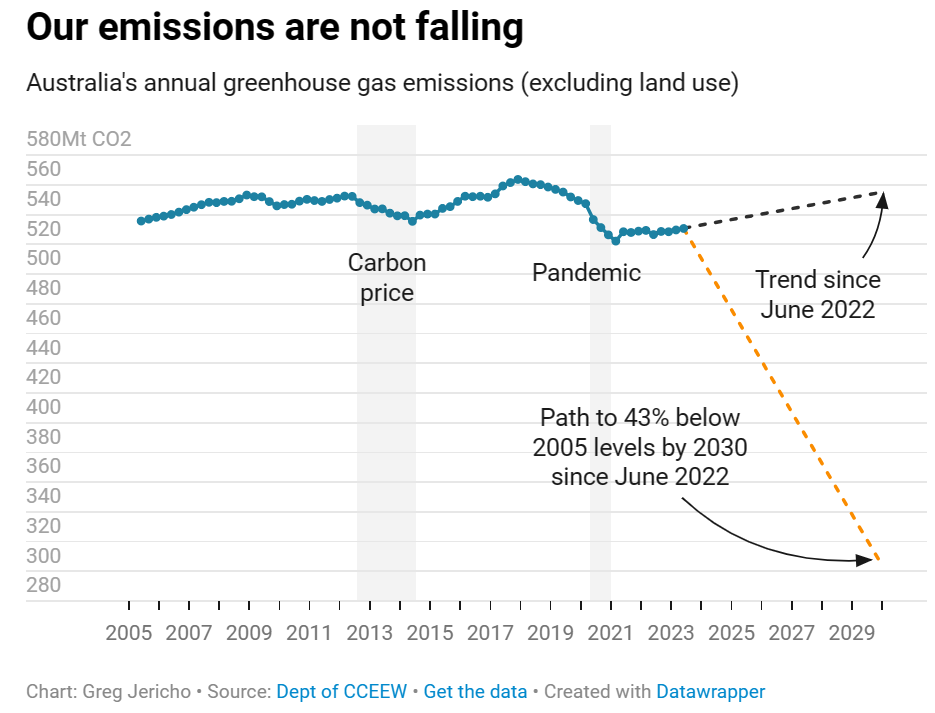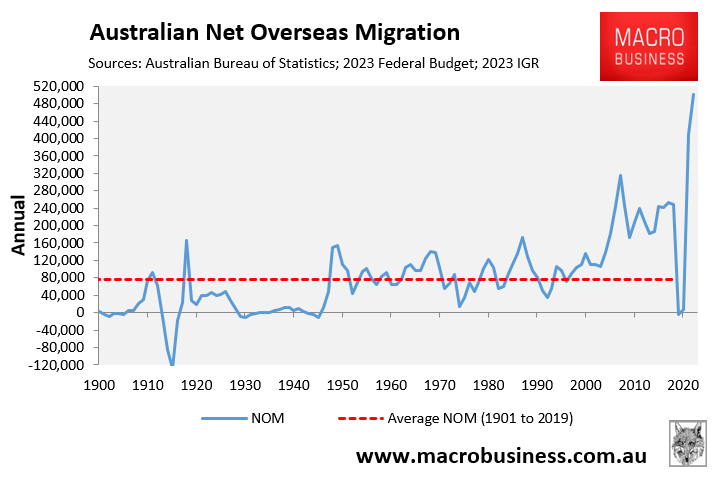The Albanese government’s target of a 43% reduction in carbon emissions by 2030 is partly based on expectations that electric vehicles would account for 89% of all new car sales by that date.

This 89% electric vehicle share was, in turn, based on modelling by RepuTex, which had also predicted that household energy bills would be $275 lower by 2025.
However, the Department of Transport now estimates that just 27% of new cars will be electric by 2030, with electric vehicles making up just 5% of vehicles on the road:
“In 2030, it’s forecast that electric vehicles will make up (5%) of the total vehicles on roads and 27 per cent of new car sales”, Surface Transport Emissions and Policy first assistant secretary Paula Stagg told a Senate estimates hearing last month.
“When Greens senator Janet Rice noted this was “way short of 89”, Ms Stagg said: “Yes it is”.
“This is what happens when you pluck arbitrary political targets out of thin air and then refuse to have Treasury or the Department assess them”, Opposition climate change and energy spokesman Ted O’Brien said.
“Its 43% emissions reduction target, 82% renewable energy target, 89% electric vehicle target and the all-important $275 reduction in power bills are all set to fail.”
Let’s be real: Labor’s 43% emissions reduction target never had a snowflake’s chance in hell of being achieved, especially while it is growing the nation’s population like a cancer cell through record net overseas migration.

The circa three million people expected to be added to Australia’s population by 2030 will massively increase demand for vehicles, homes, infrastructure, and energy – each of which will increase Australia’s emissions.
Labor’s emissions target in the face of record population growth is like trying to run against an escalator.
Take the built environment, which is estimated to account for roughly one-quarter of Australia’s greenhouse gas emissions.
How can Australia realistically meet its 2030 emissions reduction target, let alone ‘net zero’ by 2050, when its population is projected to grow by 14 million people (over 50%) in just 40 years?
Such population growth will require around 5.5 million homes to be built (accounting for demolitions), along with masses of commercial properties and infrastructure.
These 14 million consumers will also require millions of cars, consumer goods, etc. And the nation will have to build a battery of energy guzzling water desalination plants to accommodate the extra demand.
Millions more people necessarily means more energy and resource use, as well as more emissions.
A ‘Big Australia’ of 40.5 million people and ‘net zero’ carbon emissions are simply not compatible.

